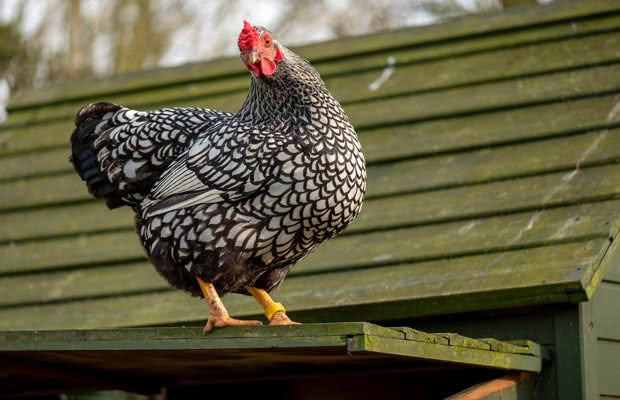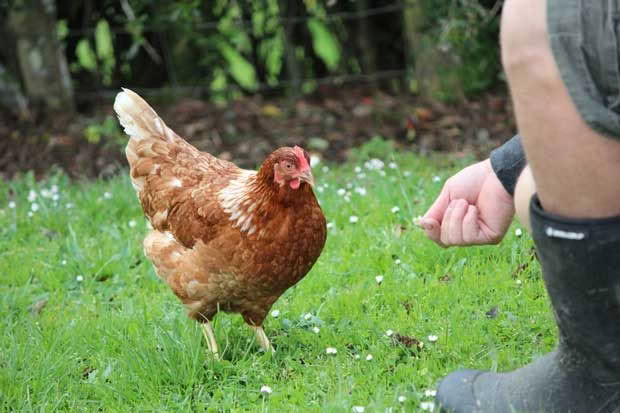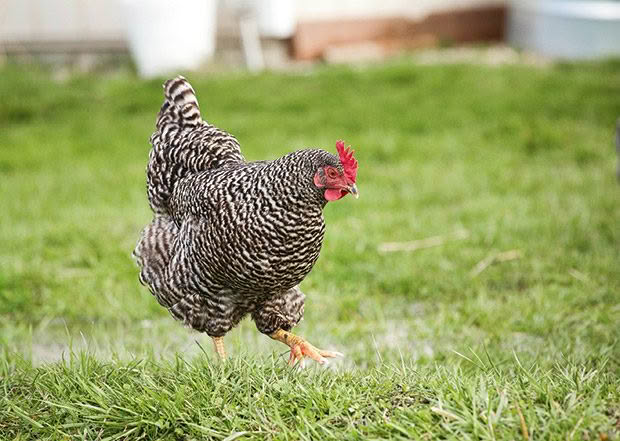How to recognise signs of stress in chickens

There are many environmental factors that can stress your chickens out, but knowing how to recognise the signs early will help make them happier and healthier faster.
Quite a few problems with poultry can be attributable to the general term ‘stress’. While many people would not normally associate a chicken as being a possible victim of stress, once you describe the causes of stress in a chicken and the detrimental effects of various factors in their environment on their health, reproduction and performance, you can identify certain likely causes. Some factors that create a stressful condition in hens include a change of environment from that to which they are accustomed, such as:
• finding a food and water source and safe sleeping arrangements;
• a sudden change in day length, like moving from a commercially lit shed with 16 hours of light, to natural day length which could be as low as eight hours in winter and changing either upwards or downwards by a few minutes every day which can stop laying;
• inadequate feed or water and a different food type either in taste or consistency;
• mixing with strangers which are more dominant or which already know the pecking order;
• exposure to new disease pathogens, especially for birds coming out of cages and being put on the floor or free range for the first time. All these forms of stress will cause the birds to act anxiously, probably stop laying for a while and young birds to stop growing.
THE 3 STAGES OF STRESS: ALARM, ADAPTION, EXHAUSTION
The first stage is alarm, a short term, neurological stage. It is the ‘fright or flight’ reaction based on adrenalin release which triggers the release of glucose into the blood and helps the bird prepare to power the muscles to escape. Adaption is based on the endocrine system where hormones are released to control the long term effects of stress as they adjust to the new changes in their environment. They can be identified by the levels of cortisone in the blood. This hormone is responsible for the formation of glucose from the body’s reserves of carbohydrates, proteins and fats to help the bird adjust to the stressor.

Diseases associated with long term stress, such as those affecting the heart, the digestive system, metabolic imbalances and susceptibility to disease, can all be attributed to high corticosteroid production in managing long term stress.
The third stage, exhaustion, occurs when a bird does not recover from the stressor, its body reserves are depleted, and the metabolism of normal function fails and the bird dies. When you change a bird’s environment – housing, feeding or temperature – but provide the necessities for them to adapt and understand what is causing their upset, they will usually recover quickly.
TYPES OF STRESS
The first obvious symptom of stress will be that layers will stop laying eggs, sometimes for up to 3-4 weeks. Others include:
Environmental – too much or too little light, cold, damp, windy, poor ventilation.
Nutritional – shortage, inability to access feed, shortage of nutrients in the feed provided, change in type/texture.
Physiological – rapid growth, becoming sexually mature.
Physical stress – catching, handling for treatments, transport.
Social – overcrowding during brooding, rearing or in a small coop, mixture of sizes, rooster-to-hen ratio wrong.
Psychological – fear of predators (dogs and cats included), being chased by children etc.
Pathological – exposure to infectious agents, eg coccidiosis, moulds and fungi producing mycotoxins, or excessive stimulation of the immune system in less than sanitary conditions e.g wet litter, muddy runs. This can lead to an impaired nutrient balance allowing the immune system to succumb to disease.
Other stressors include a change in a bird’s current housing situation or new housing, transport, a drop in temperature, especially at night, a reduction in day length (depending on the time of the year), exposure to parasites, new infective bacteria and viruses, and a change in food type and availability. These are multi-stress factors and one on its own would be enough. When you move any bird from a system it is accustomed to to a differing one, it causes stress, which can be enough to stop young birds growing for a short time, and for roosters to become temporarily infertile.

A domestic hen or rooster abandoned on the side of a road or in a park instantly gets multiple stressors: lack of food, exposure to many more diseases (especially those carried by rodents, wild birds and resident poultry), lack of knowledge of safe roosting areas, traffic danger, and attack by resident roosters, especially when the rooster to hen ratio will be male-heavy. The consequence is their lives are very short, and end painfully.
REFERENCES
Physiology of stress in poultry by Jag Mohan, Central Avian Research Institute
www.poulvet.com/poultry/articles/physiology.php
Non-invasive assessment of stress in commercial housing systems by Jeff Downing, University of Sydney (for the Australian Egg Corporation)
https://www.aecl.org/dmsdocument/41
READ MORE
Super hens or old-fashioned girls: a guide to poultry breeds

